SSA - Surround Sound Analyzer
Move the mouse accross the display elements to get the corresponding descriptions.
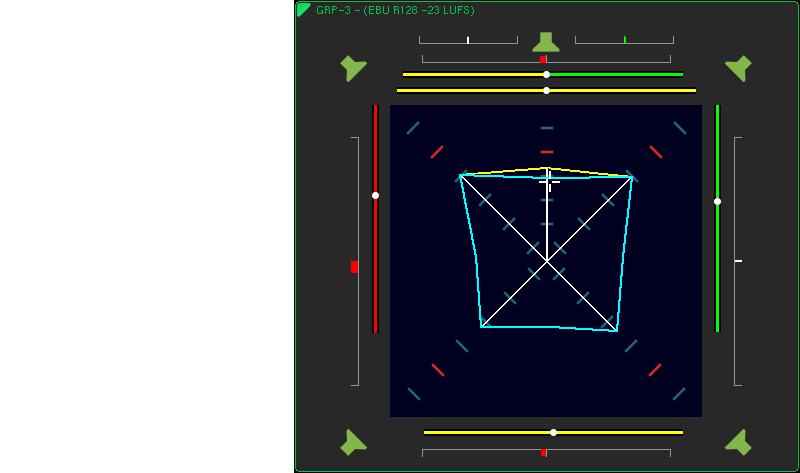
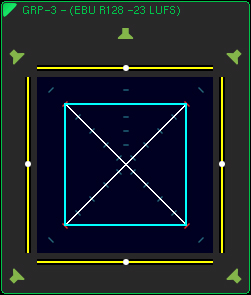 |
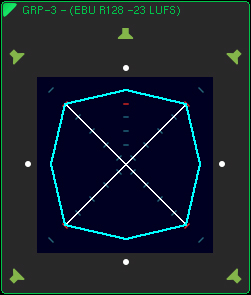 |
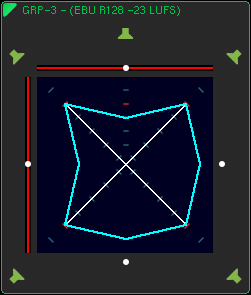 |
||
| 1 | Incoherent noise with same levels in the channels L, R, LS and RS, set to the reference monitoring sound pressure level. In each case the correlation is r = 0 (straight unbroken TVI lines, yellow PSI moving bars), phantom sound sources are not locatable (PSI moving bars have maximum spreading). | 2 | Identical sine wave signal with same level in the channels L, R, LS, RS. The correlation is r = +1 (outward broken TVI lines), the phantom sound sources (PSI) are in the middle, similar to a mono signal. | 3 | Same as on the left but with the left channel phase rotated through 180°. Channel pairs L - R and L - LS each show the negative correlation r = -1 (inward broken TVI lines, red PSI moving bars), there are no phantom sound sources locatable (PSI moving bars have maximum spreading there). | ||
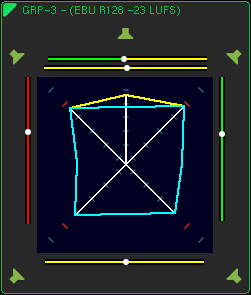 |
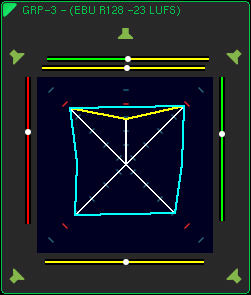 |
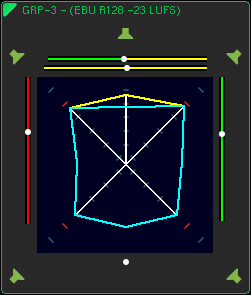 |
||
| 4 | Surround signal with some Center presence (yellow roof resp. the area enclosed by the L-C-R connecting lines displayed above the TVI polygon). A support microphone would be too dominant. A dialog in relation to music would be too quiet. The width of the PSI moving bars of the C channel is a sign of coherent signal parts in L and/or R (crosstalk). |
5 | Surround signal with low level Cen- ter presence (yellow funnel resp. the area enclosed by the L-C-R connecting lines displayed inside the TVI polygon). When recording music, the intermixture of a support microphone may enhance the perceptibility of the C channel in relation to the channel L and R. |
6 | The widely outward broken TVI line between LS and RS and no spreading of the PSI moving bar indicate that an identical mono signal is applied in both surround channels. So backward pan- ned front channel rates may also be detected. |
||